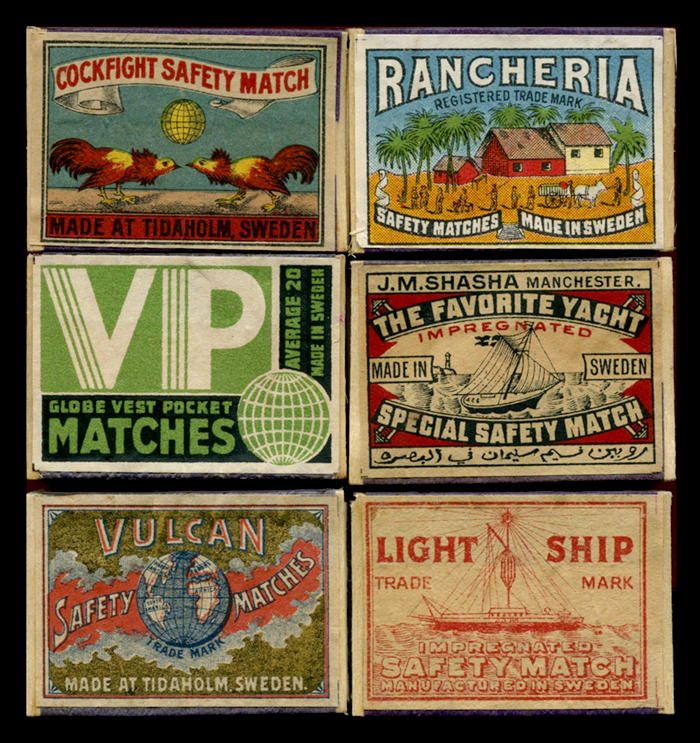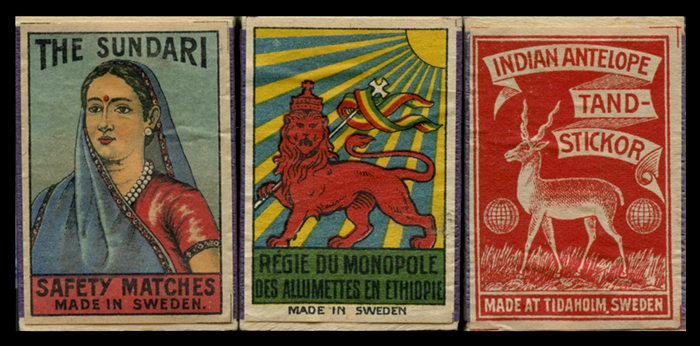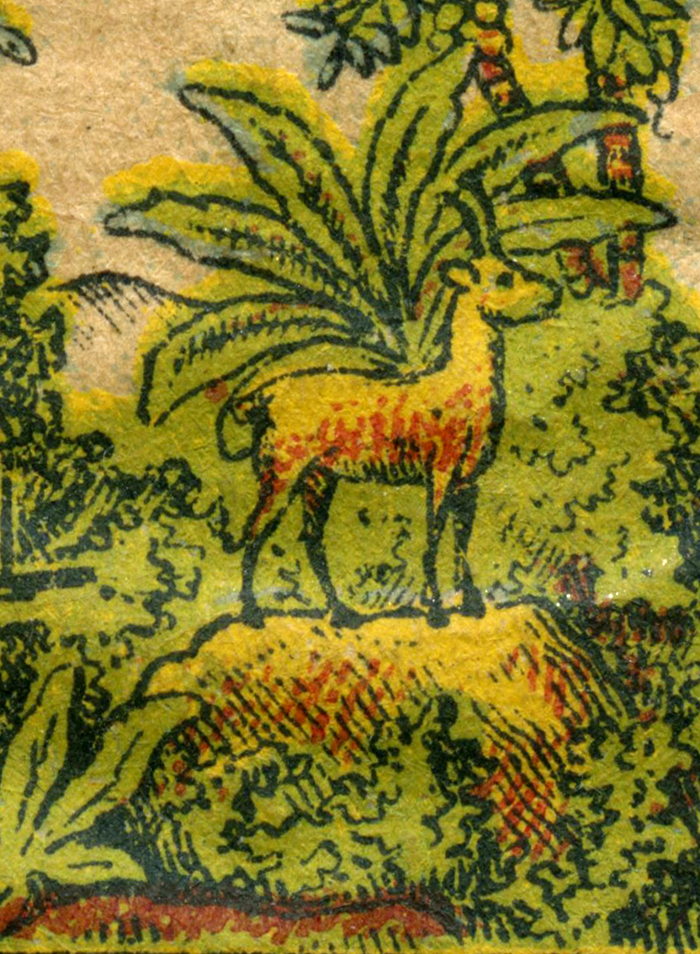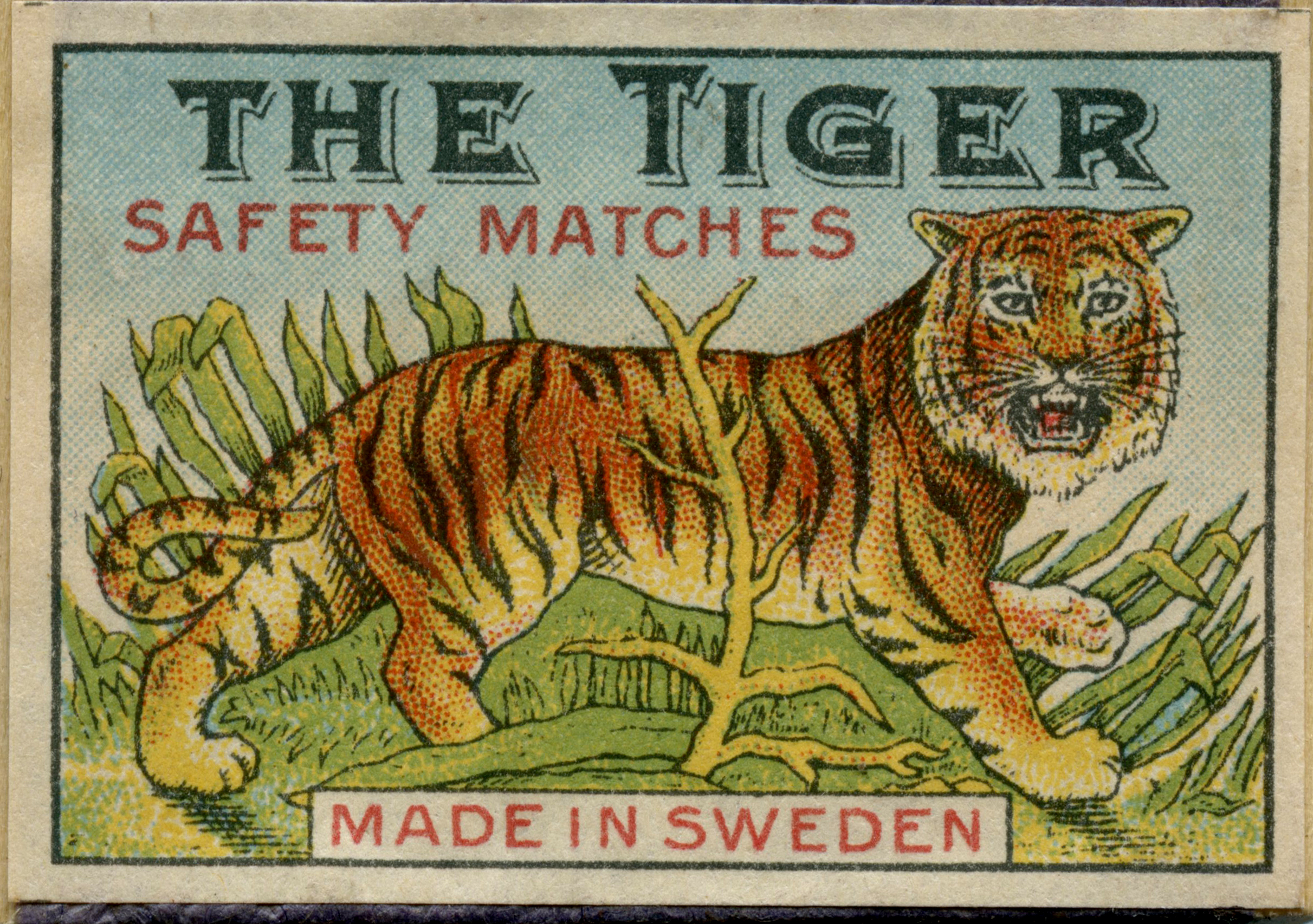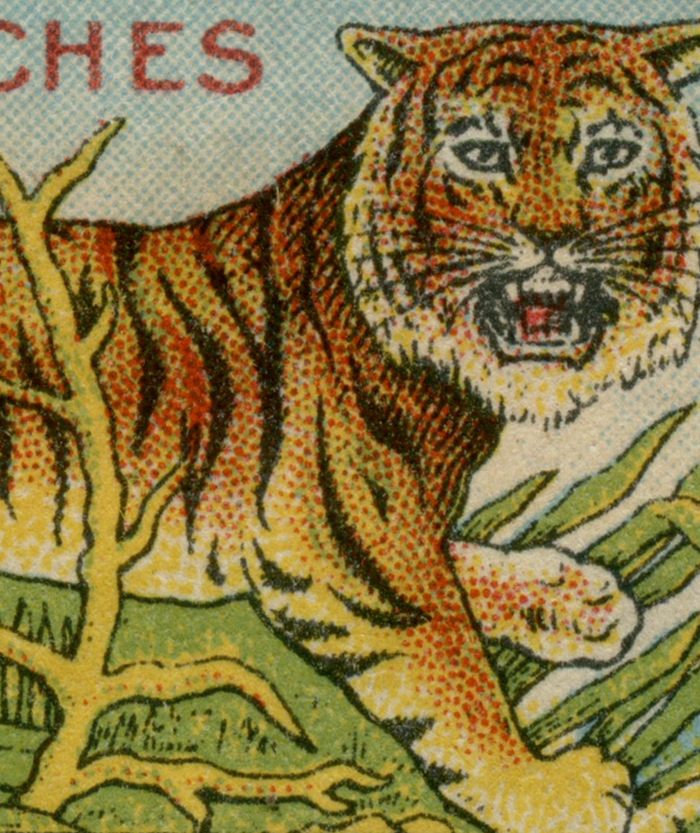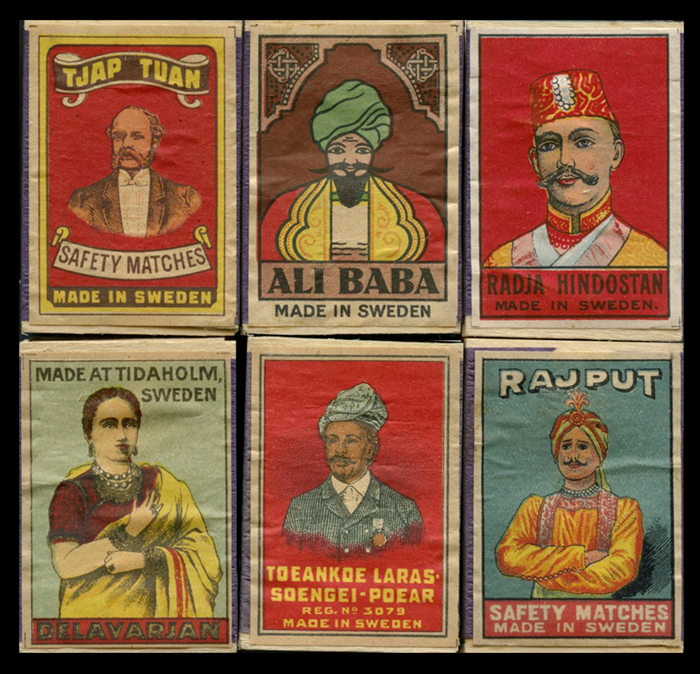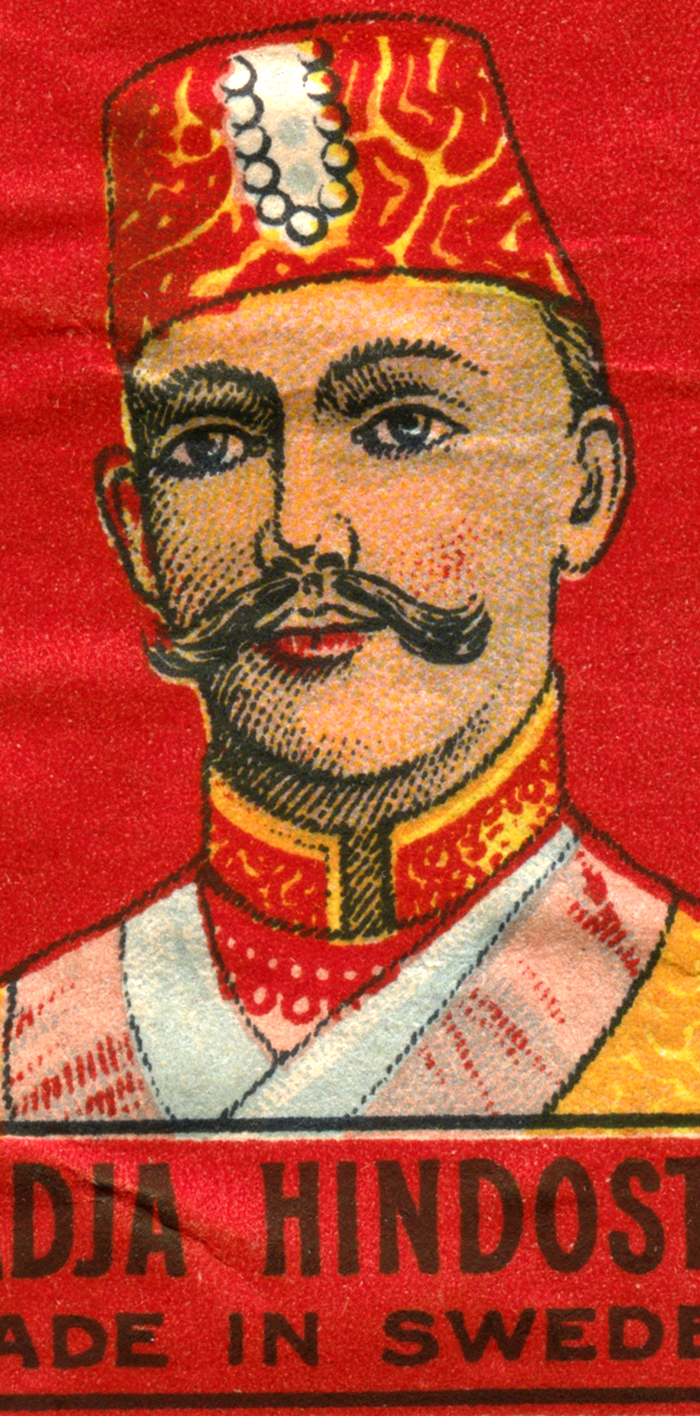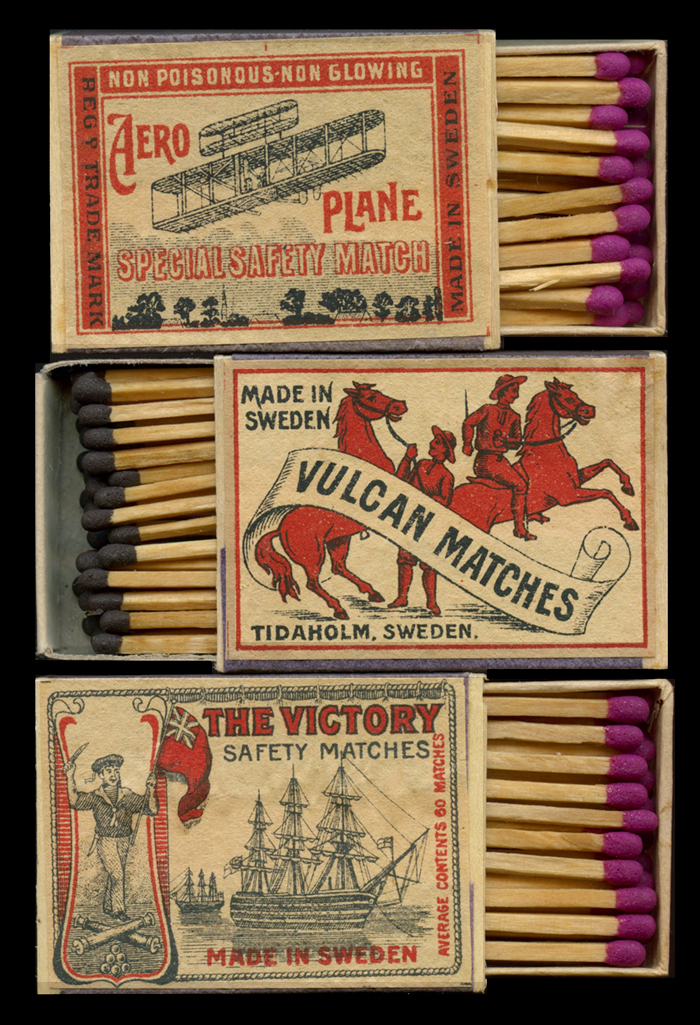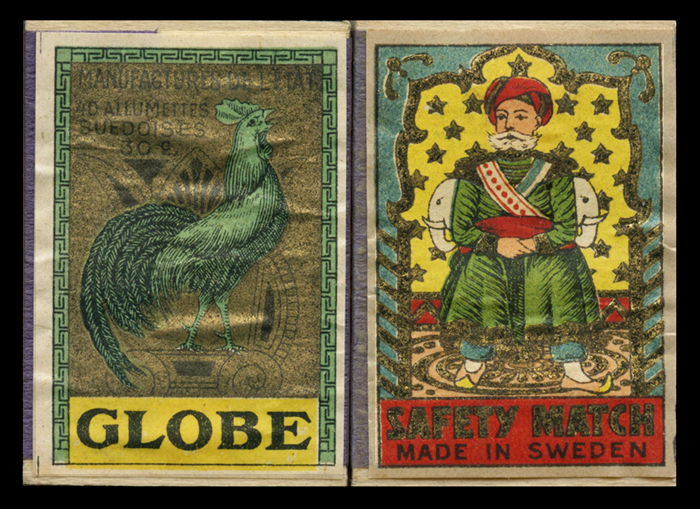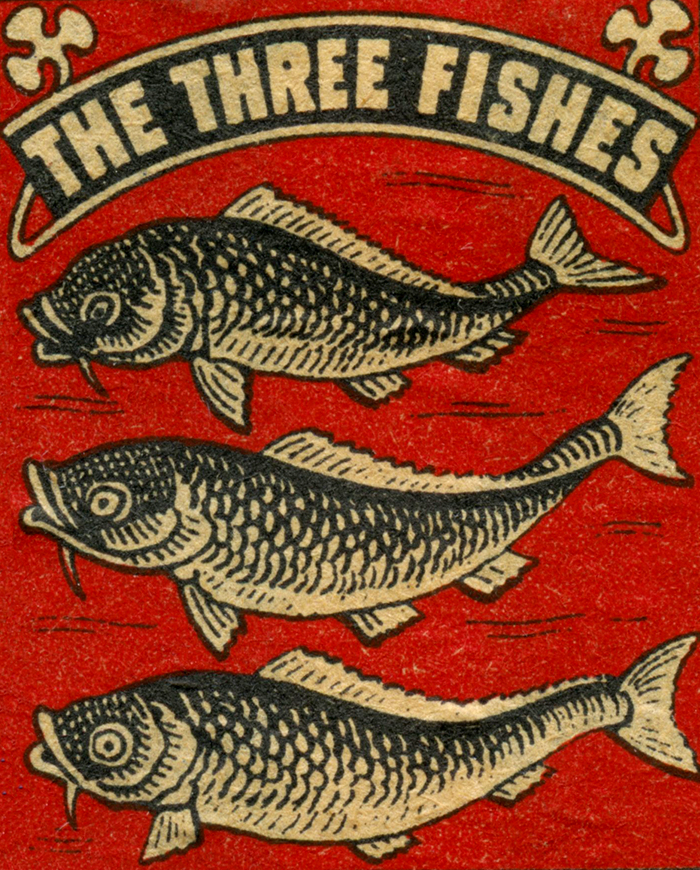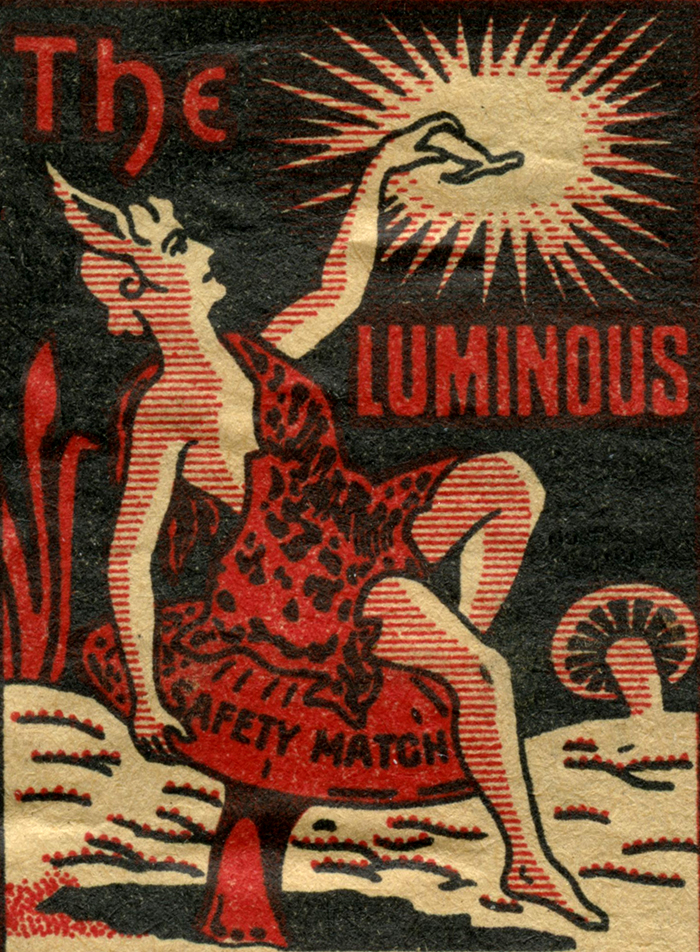Imagine my delight, when last week, I came across a long lost collection of mine—over twenty-five vintage matchboxes, laying in wait to be appreciated once again. I had purchased them in the late 1970s at a flea market for the obvious appeal of their graphic beauty. Some had actual gold ink, and almost all were incredibly rich in design and printing. Matchboxes similar to these are nearly a century old, but I have no way myself to verify this. If they are fakes from the 1970s, someone went to a lot of trouble.
As I sat at my kitchen table to get reacquainted with these small treasures, holding each in my hand under the bright kitchen lamp, my first observation was that they were made in Sweden. It looked as if all were branded for destinations and sale in India. Each box measures the same—1.5 inches by just over 2 inches. All of them are still full of the original matches.
Why Sweden, I wondered? A quick Google search revealed that the earliest phosphorus matches were created by an English scientist in the 1830s. These were “yellow phosphorus” matches, and had to be stored in special containers since they could ignite against any surface. Yellow phosphorus was not only highly flammable (they could easily ignite just by rubbing against one another in the box), but the fumes that emanated from them toxic.
In 1844, the “safety match” was invented in Sweden when the poisonous yellow phosphorus was replaced with non-noxious red phosphorus and placed, as a striking surface, on the outside of the box. This advancement would make Sweden famous, and demanded an entirely new type of packaging. Factories in Sweden developed an inner and an outer box made of hard paper with the striking surface placed along the side of the outer box. These early boxes were stamped with the city of manufacture, and very often it was Tidaholm, the largest manufacturing center in the country.
As it turns out, Swedish safety matches were so superior to foreign matches by the late 1800s that exporting them became a major industry. But this brought about a new problem—forgeries. Unscrupulous foreign manufacturers discovered that it was a lot easier and cheaper to reproduce the matchbox labels than use the expensive Swedish production methods. I found one source that reported in 1869, there were nearly 1000 different forgeries of varying quality of the yellow Jönköping Original label.
Here is where my India branded matchboxes may or may not fit into this story. I found that many foreign manufacturers at that time were allowed to print their own labels in Sweden, legally allowing them to add the words “Made in Sweden,” even though this only applied to the actual label. Consumers did not know this. This allowed inferior matches manufactured in other countries to have the superior pedigree of the Swedish brand.
Which finally begs the question—were the labels in my collection of branded matches from India printed in Sweden and the stick matches manufactured in India? Some expert might know, but for me, I am simply content with the eye candy.
